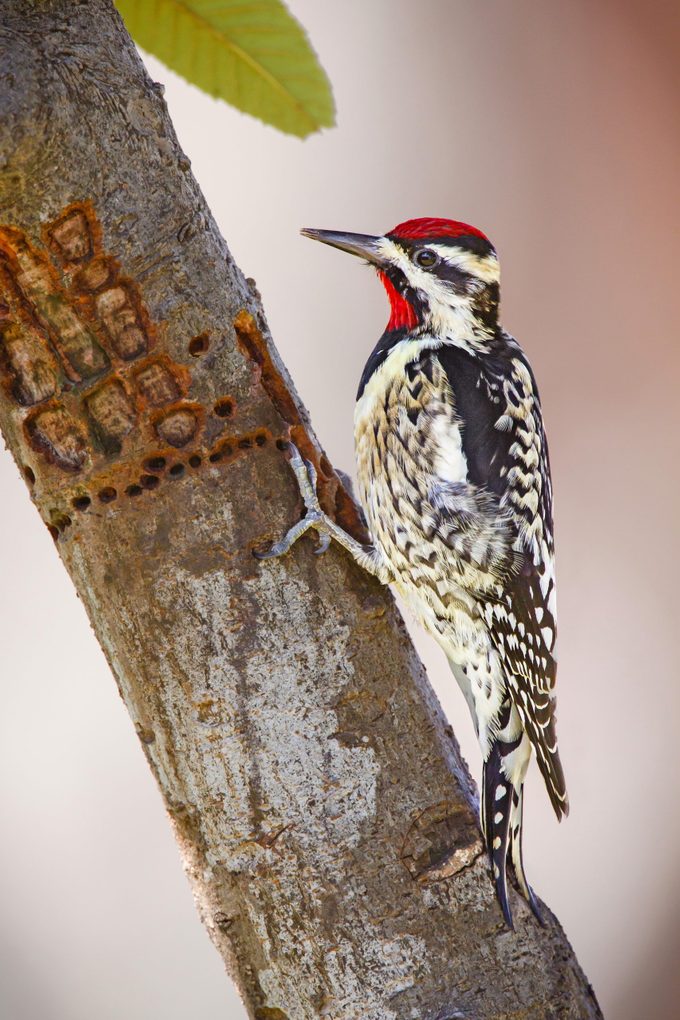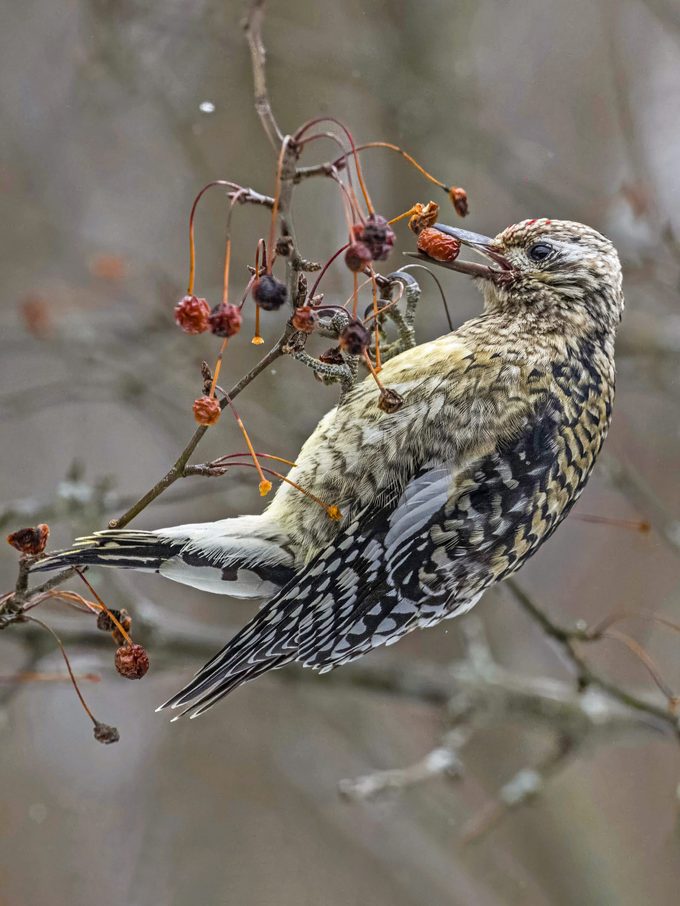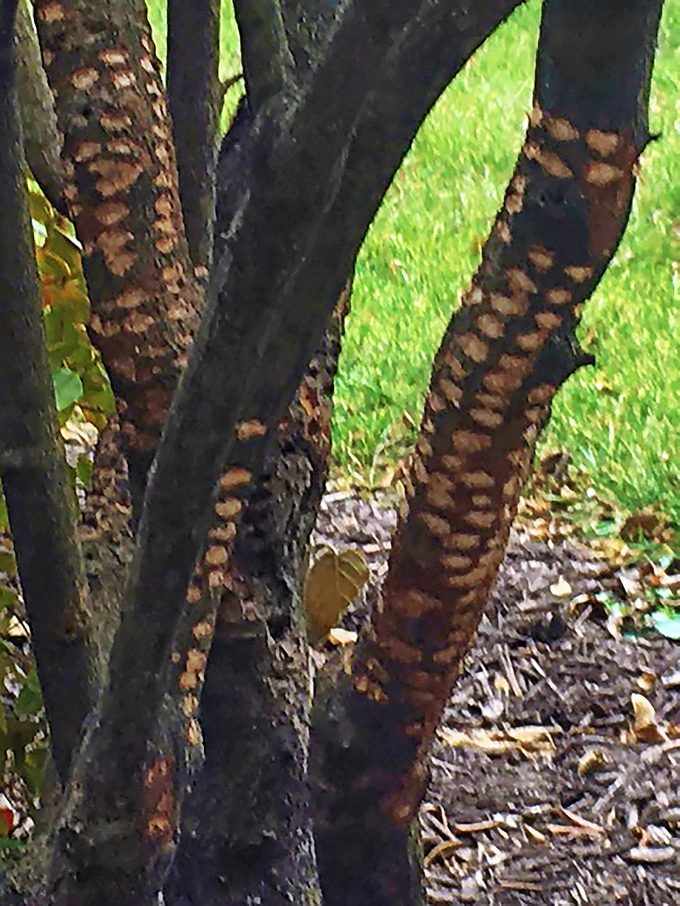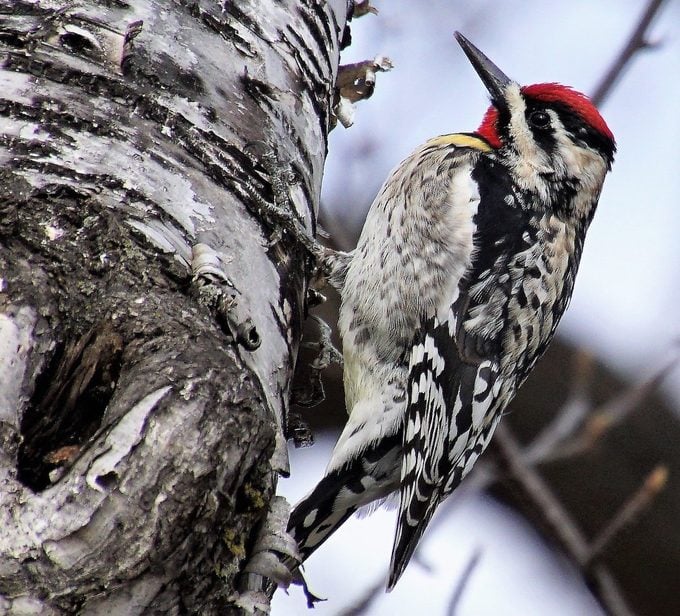Yellow-Bellied Sapsucker: A Woodpecker by Another Name
Updated: Jan. 19, 2024
Don't let the moniker fool you. Yellow-bellied sapsuckers are full-fledged members of the woodpecker family with a one-of-a-kind way of eating.
Yellow-bellied sapsuckers are part of the woodpecker family but have an interesting way of getting food. When they drill into trees, they’re not always looking for bugs. These sapsuckers tap out row after row of individual sap wells in tree trunks to get the sweet liquid.
What Does a Yellow-Bellied Sapsucker Look Like?

They have a long pointy bill like most woodpeckers and mottled black, white and yellow feathers. Look for vertical white wing patches to distinguish yellow-bellieds from similar-looking black-and-white downy and hairy woodpeckers.
Licia Kuckkahn Johnson, education director and naturalist at the North Lakeland Discovery Center in Manitowish Waters, Wisconsin, remembers seeing her first yellow-bellied sapsucker and thinking that it didn’t look very yellow to her. It’s much more muted than the name suggests.
Young yellow-bellieds have a brownish coloration, but their white wing patches, like those of the adults, are still a useful field mark to look for.
Female Vs Male Yellow-Bellied Sapsucker

According to Licia, it’s easy to tell the mature males and females apart. Just look for a red forehead. The male’s face is significantly more colorful than the female.
She also says, “If a bird has a red throat, you know right away it is a male, and if the throat is white, you are looking at a female sapsucker.”
Learn all about red bellied woodpeckers.
Sapsucker Damage to Trees

You can tell sapsucker sap wells apart from other woodpecker damage by the uniformity. Unlike other types of woodpeckers, sapsuckers create neat rectangular rows of damage on the trunks and branches of trees and shrubs. The woodpecker uses its tongue to lap up the sap. The holes themselves don’t directly hurt the plant, but they do open up opportunities for fungi and bacteria.
Licia was particularly excited when she was able to identify their sap wells for the first time. “After 20 years of teaching, I still love asking folks what they think made those crazy patterns on the trees,” she says.
Yellow-Bellied Sapsucker Range and Migration

The yellow-bellied is the only sapsucker seen in the eastern half of the U.S. and across the northern forests. These sapsuckers are migratory, which is a fairly rare trait for woodpeckers. They live in a variety of habitats, from low-lying floodplains to mountainous forests at 10,000 feet. Their breeding range extends from Alaska to Newfoundland and south along the Appalachians. They winter across the East from New Jersey west to Texas and all the way south to Panama.
Other sapsucker birds like the red-naped, Williamson’s and red-breasted are found in the western states.
Nesting Habits
Male yellow-bellied sapsuckers drum out slow Morse code-like territory notes. A common breeding display involves males pointing their bills skyward as they showcase their red throat patch for an interested female. Though both sexes are involved with excavating nesting cavities, males do most of the work.
Meet the large, red crowned pileated woodpecker.
Yellow-Bellied Sapsucker Call and Sounds
Yellow-bellied sapsucker calls are a repeated series of nasally mewing sounds. Licia says the noise resembles a raspy, squeaky dog toy being chewed on over and over.
According to the Kaufman Field Guide to Birds of North America, they’re general quiet birds but let out a “catlike meeyah.” Listen for drumming with a staccato beat.
What Do Yellow-Bellied Sapsuckers Eat?

Yellow-bellied sapsuckers often feed from trees in young deciduous or mixed forest stands. During the springtime, flowing sap wells provide nourishment to the sapsuckers. Insects, bats and other birds, including ruby-throated hummingbirds, also enjoy the sweet tree sap.
I took this photo of a juvenile male yellow-bellied sapsucker (above) in our Tennessee backyard. We have these visitors during the winter months, and can tell which trees are their favorites by all the holes they peck in the trunks. If you look closely at this image, you can see sap on the bird’s beak. I love this species’ plumage and noisy calls,” says Kim Enoch.
In addition, sapsuckers snack on insects they glean from tree trunks or catch out of the air. Native berries round out the bird’s diet.
How to Attract a Yellow-Bellied Sapsucker
Consider growing fruit-producing trees and shrubs to draw in yellow-bellied sapsuckers. And keep an eye on your suet feeder to see if they visit your backyard.
Sapsuckers visit hundreds of native trees, but here are some of their favorites for drilling sap:
- Aspen
- Eastern hemlock
- Elm
- Paper birch
- Red hickory
- Sugar maple
- Yellow birch
Next, learn how to identify a northern flicker.




















